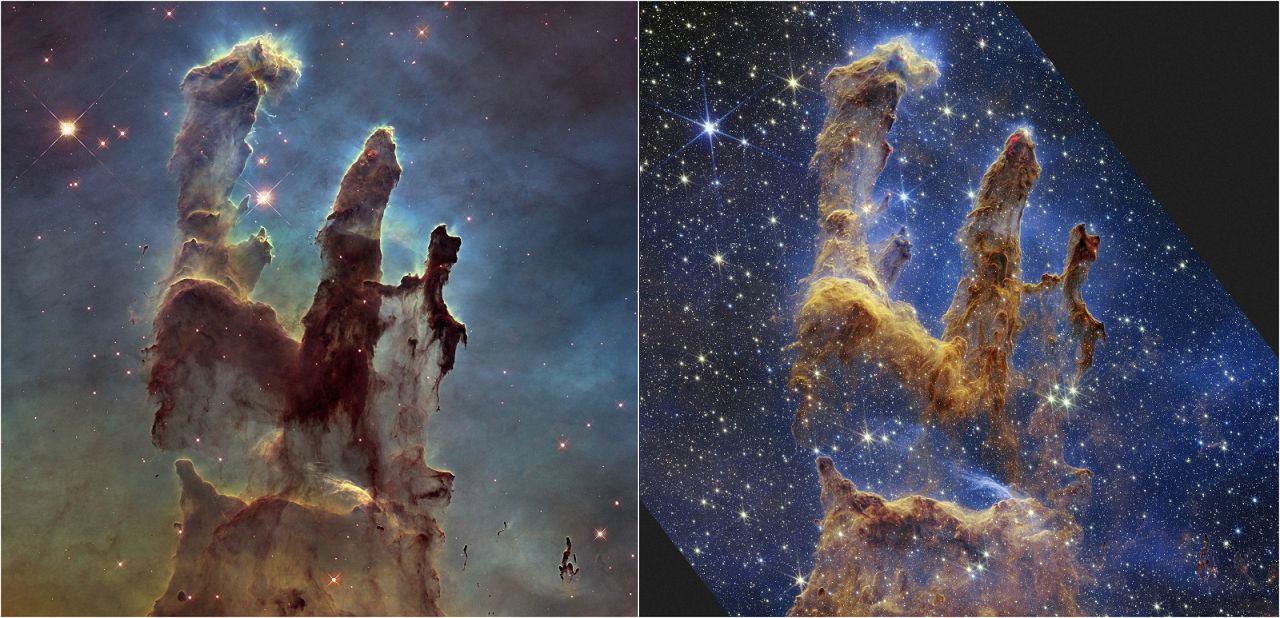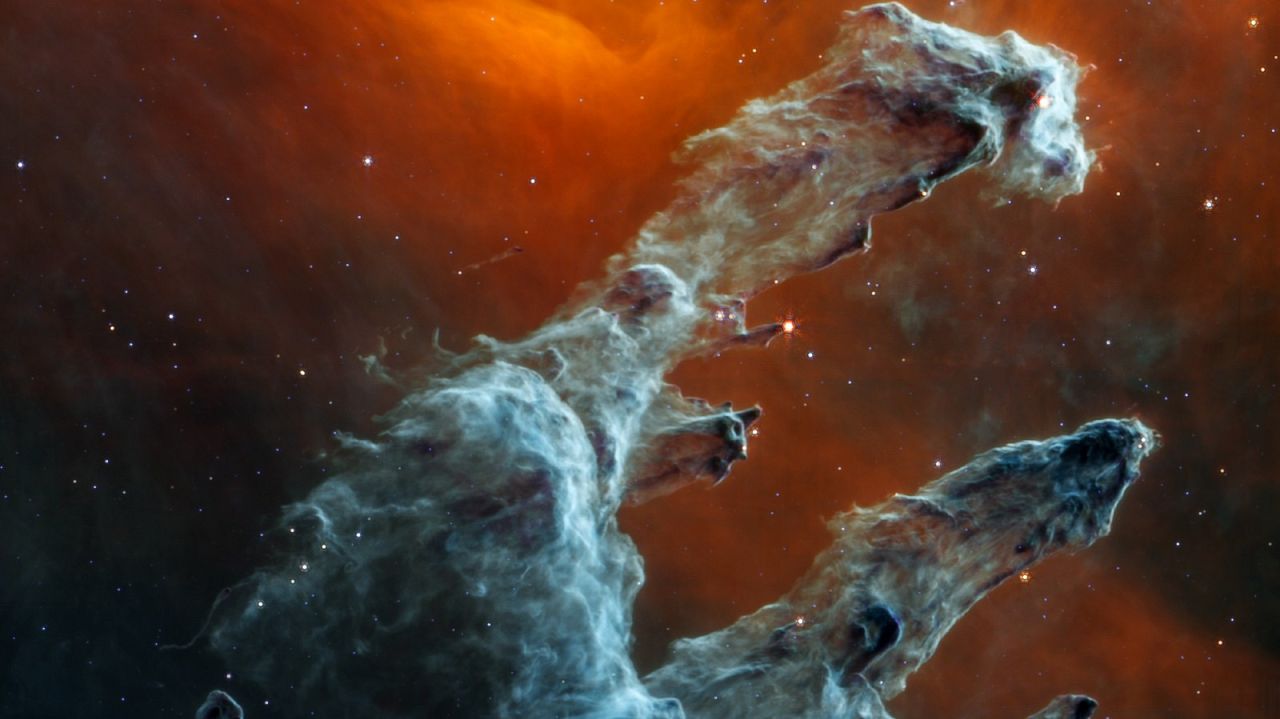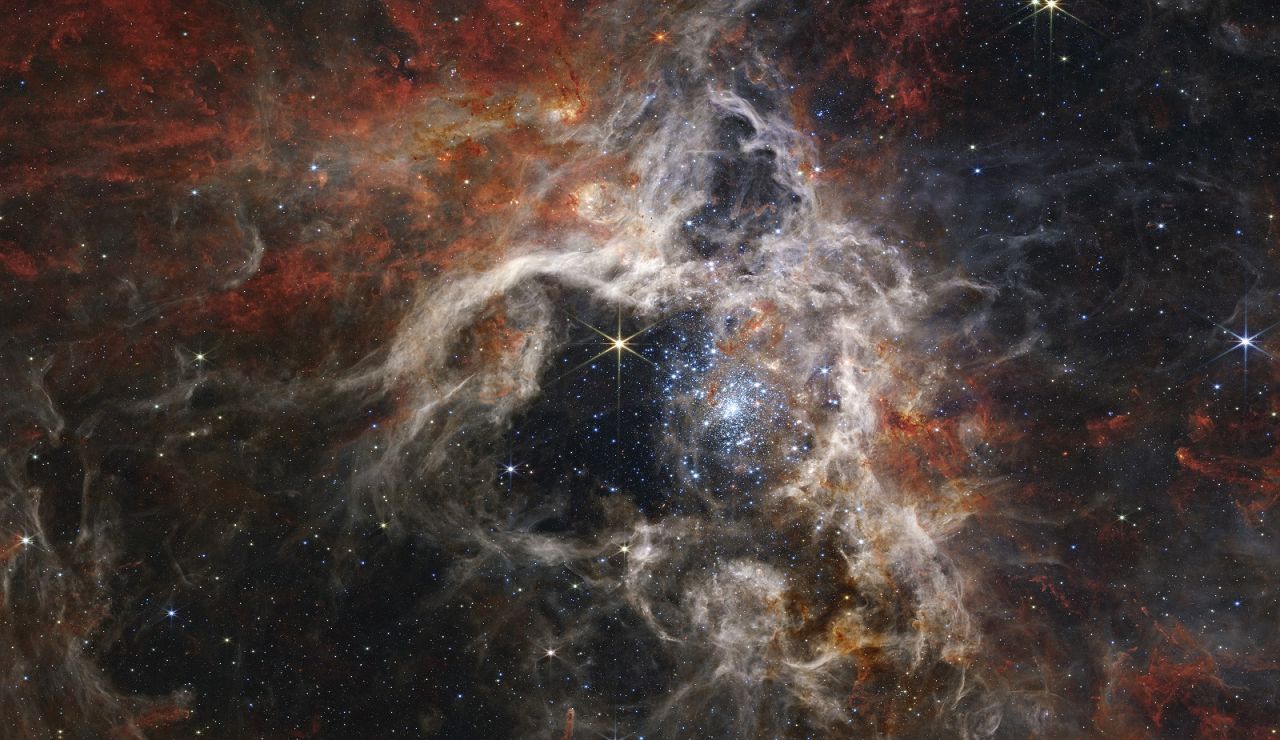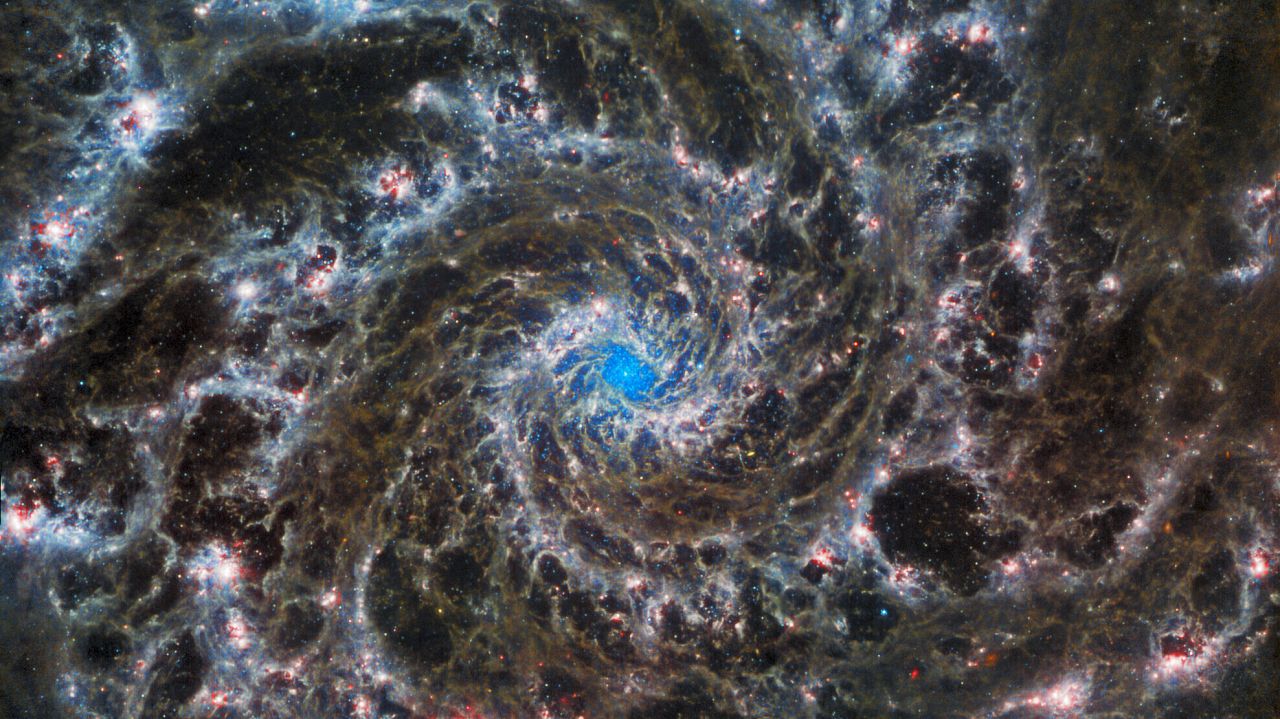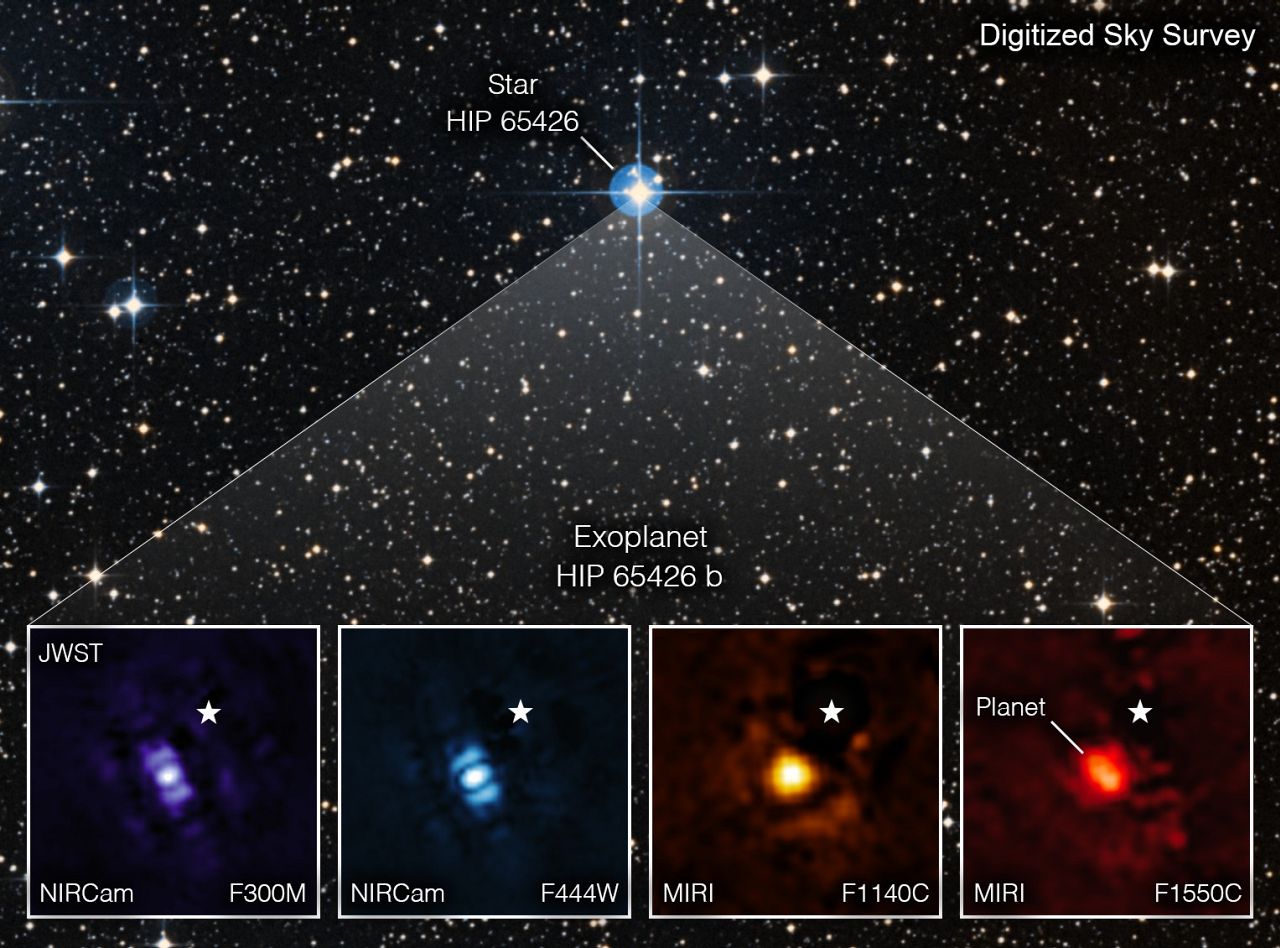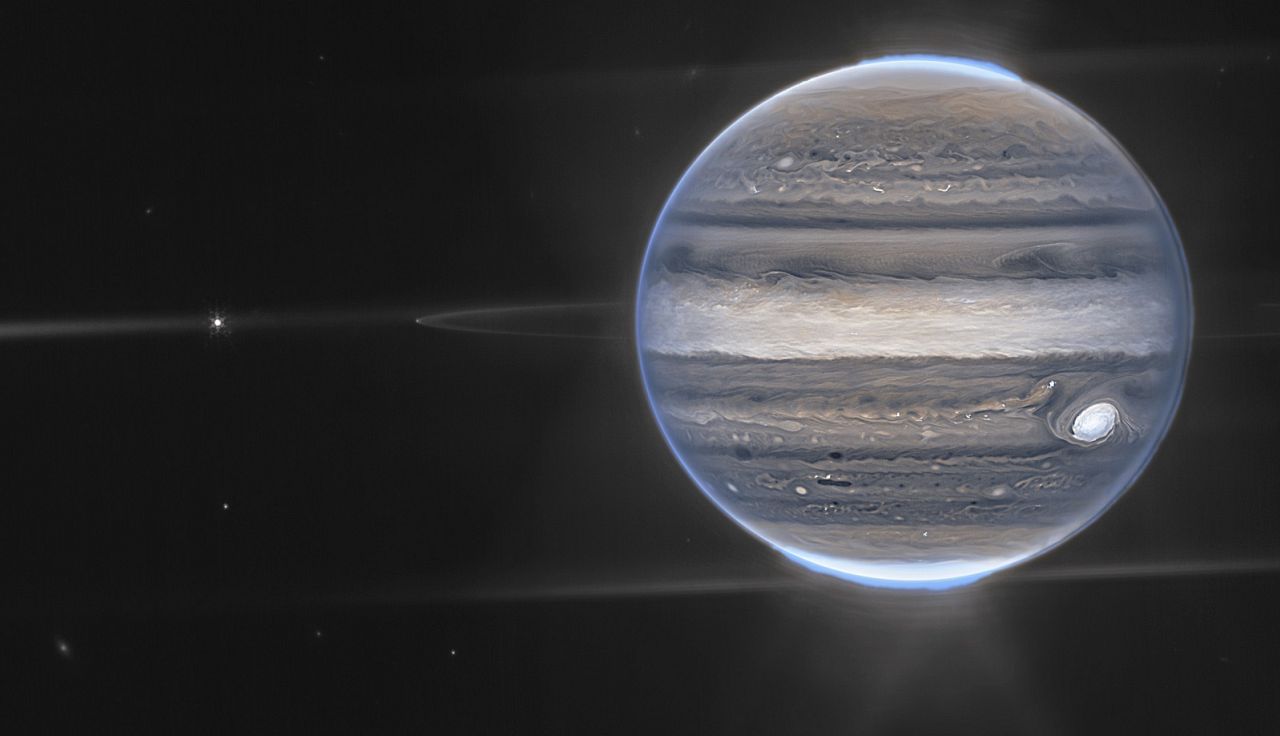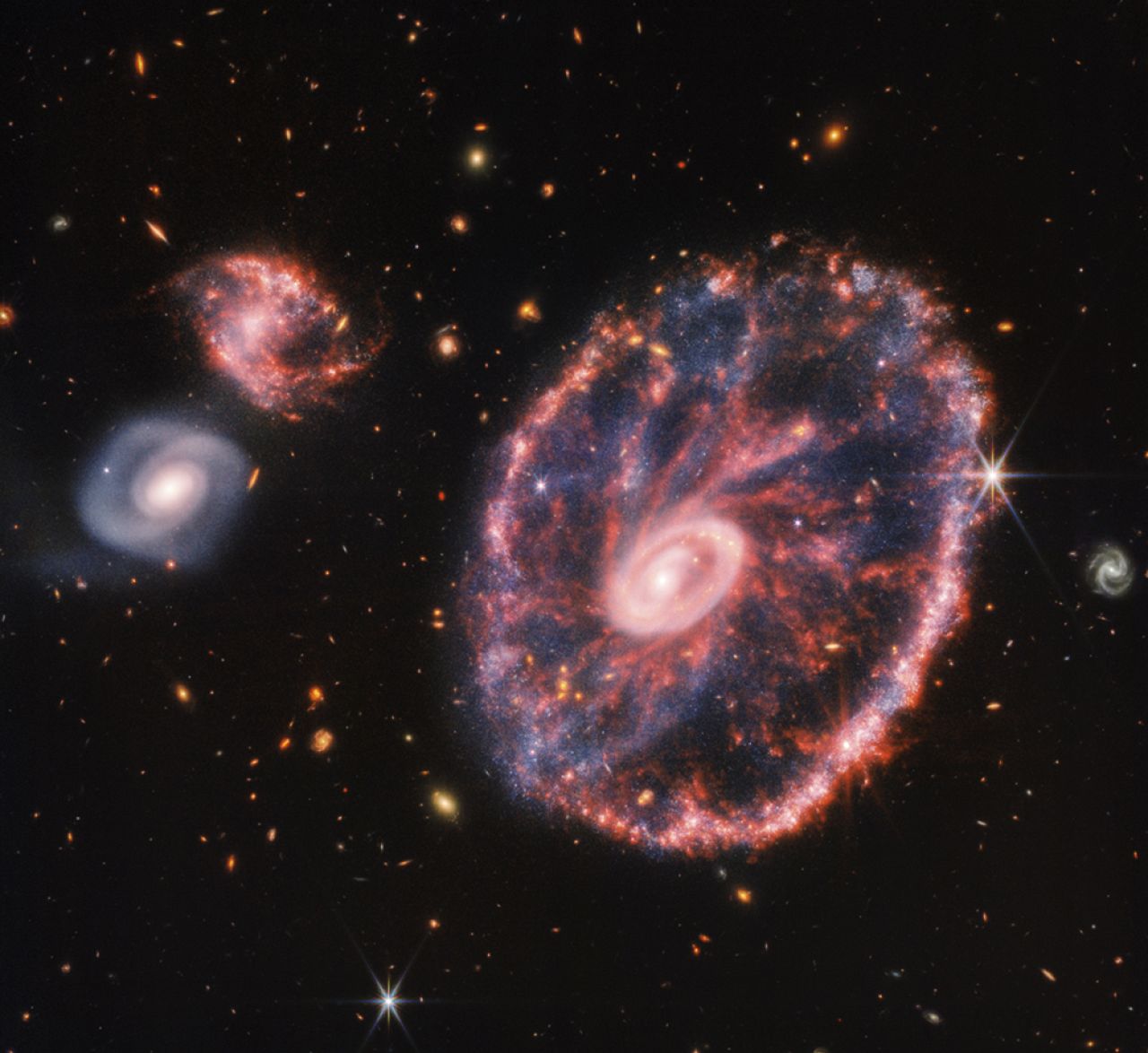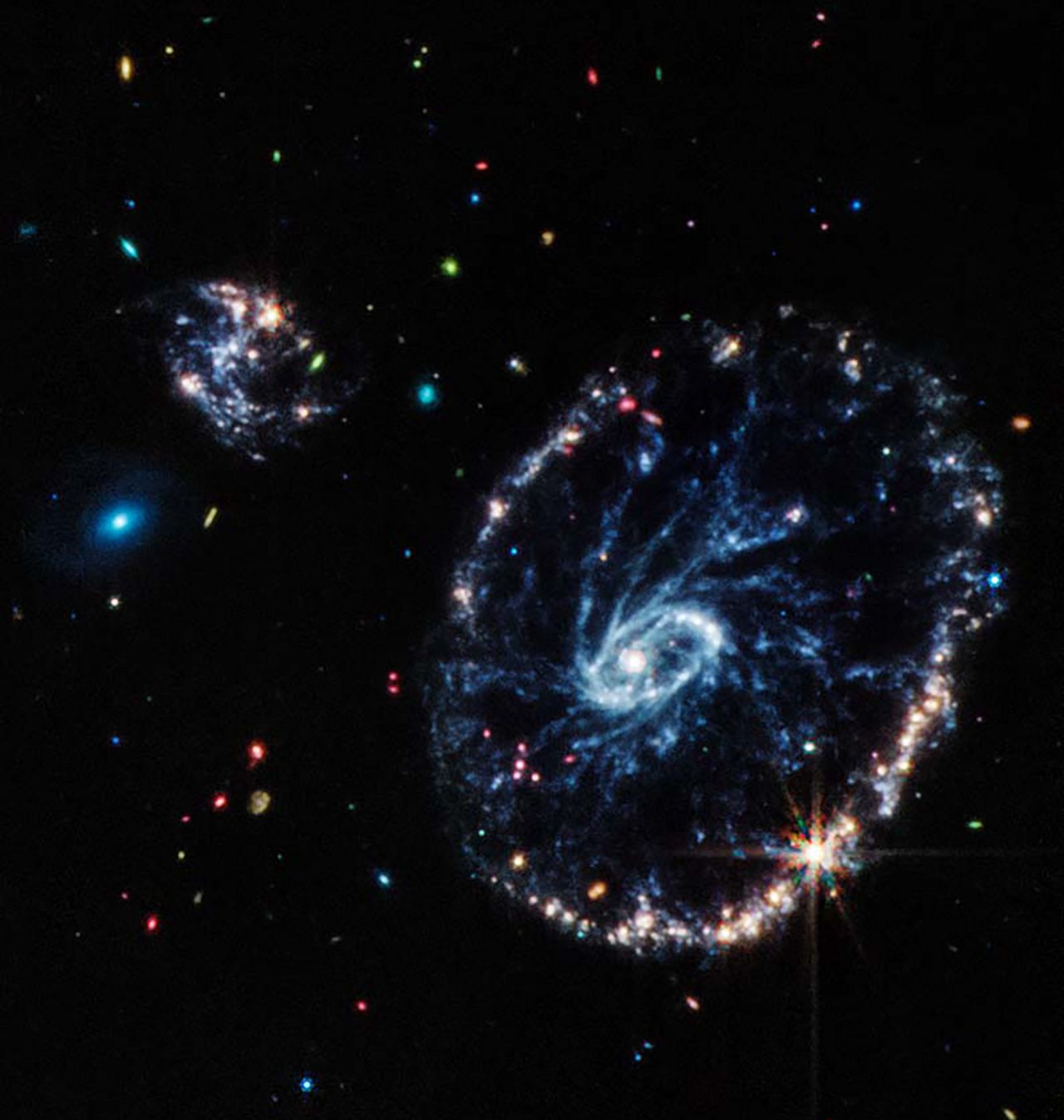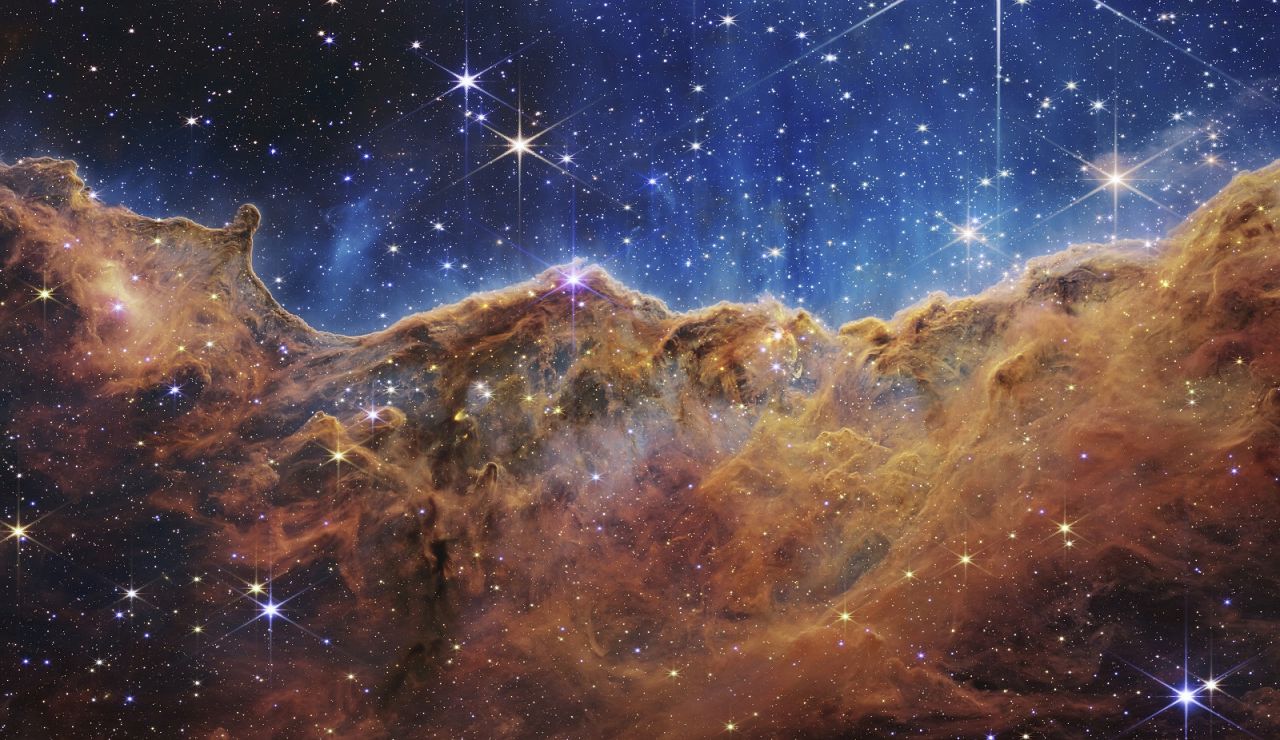2 years since James Webb Telescope opened up, this is what it's taught us about the universe
On January 8, 2022, the James Webb Telescope unfurled its mirror for the first time. Two years on, it has shown us things in the universe we've never seen before.
Our naked eye would never be able to see what the telescope sees: travelling through light and space, NASA's James Webb can see the origins of the universe - something our minds can hardly begin to grasp.
Working like a time machine, this powerful telescope has shown us far-off galaxies, the death of stars, and the atmosphere of planets outside our solar system, gifting scientists and all humankind with new breathtaking images from space.
On Saturday, January 8, 2022, NASA's new James Webb Space Telescope first opened its huge mirror.
It was the final step in the unfurling of the observatory positioned 1.6 million km from Earth.
The last portion of the 6.5-metre mirror swung into place at the flight controllers' command, completing the unfolding of the telescope.
Since that moment, James Webb has changed how we view the cosmos. These are some of the most stunning pictures it released so far and what it's taught us about the universe that had so far remained out of reach.
A deeper look at the Pillars of Creation
The James Webb Telescope captured a highly detailed of the iconic Pillars of Creation - first made famous by images taken by NASA's Hubble Telescope in 1995 - where new stars are forming within dense clouds of gas and dust.
The three-dimensional pillars look like rock formations but are far more permeable. These columns are made up of cool interstellar gas and dust that appear - at times - semi-transparent in near-infrared light.
Building on images taken in 1995 and 2014, Webb’s new view of the Pillars of Creation will help researchers revamp their models of star formation by identifying far more precise counts of newly formed stars, along with the quantities of gas and dust in the region.
Over time, they will begin to build a clearer understanding of how stars form and burst out of these dusty clouds over millions of years.
On October 28, 2022, NASA released a second image of the Pillars of Creation, this time as seen by Webb's Mid-Infrared Instrument (MIRI). And it's haunting - in NASA's words, this exceptionally dusty rendering makes it both sombre and "chilling".
That's because while mid-infrared light specialises in detailing where dust is, at these wavelengths, most of the surrounding stars aren’t bright enough to appear.
"Instead, these looming, leaden-hued pillars of gas and dust gleam at their edges, hinting at the activity within," NASA explained.
Thousands of new stars in the Tarantula Nebula
In images released by NASA in September 2022, the nebula 30 Doradus can be seen showcased in all its glory.
Nicknamed the Tarantula Nebula, it's a favourite of astronomers studying star formation, as one of the largest and brightest star-forming regions in the galaxies nearest to our Milky Way.
The Tarantula Nebula lies 161,000 light-years away in the Large Magellanic Cloud galaxy. It gets its name from the long dusty filaments resembling spiders' legs in older images.
The James Webb Telescope, however, captures the stellar nursery in new levels of clarity, showcasing tens of thousands of never-before-seen young stars that were previously shrouded in cosmic dust.
Iconic Phantom Galaxy
This stunning image is of the so-called Phantom Galaxy (M74). Webb's ability to pick up longer wavelengths of light allows scientists to pinpoint star-forming regions in galaxies such as this one.
This image reveals masses of gas and dust in the galaxy's arms, and a dense cluster of stars at its core.
First direct image of a distant exoplanet
NASA released unprecedented observations of a planet outside our solar system, making use of the James Webb Space Telescope’s powerful infrared gaze to reveal new details that ground-based telescopes would not be able to detect.
The image of exoplanet HIP 65426 b, a gas giant about six to 12 times the mass of Jupiter, is the first time the Webb telescope has taken a direct image of a planet beyond the solar system.
"This is a transformative moment, not only for Webb but also for astronomy generally," said Sasha Hinkley, associate professor of physics and astronomy at the University of Exeter in the United Kingdom, who led these observations.
Taking direct images of exoplanets is challenging because stars are so much brighter than planets, says NASA.
Located 355 light-years from Earth, HIP 65426 b is about 15 to 20 million years old, compared to our 4.5-billion-year-old Earth.
It is 100 times farther from its host star than Earth is from the Sun, so it is sufficiently distant from the star that Webb can easily separate the planet from the star in the image. But it is also more than 10,000 times fainter than its host star in the near-infrared, and a few thousand times fainter in the mid-infrared.
"Obtaining this image felt like digging for space treasure," said Aarynn Carter, a postdoctoral researcher at the University of California, Santa Cruz, who led the analysis of the images.
"At first all I could see was light from the star, but with careful image processing I was able to remove that light and uncover the planet".
Jupiter and its moons like you've never seen them before
NASA scientists also released new shots of the solar system's biggest planet, describing the results as "quite incredible".
The James Webb Telescope took the photos back in July 2022, capturing unprecedented views of Jupiter’s northern and southern lights, and swirling polar haze. Jupiter's Great Red Spot, a storm big enough to swallow Earth, stands out brightly alongside countless smaller storms.
One wide-field picture is particularly dramatic, showing the faint rings around the planet, as well as two tiny moons against a glittering background of galaxies.
"We’ve never seen Jupiter like this. It’s all quite incredible," said planetary astronomer Imke de Pater, of the University of California, Berkeley, who helped lead the observations.
"We hadn’t really expected it to be this good, to be honest," she added in a statement.
The infrared images were artificially coloured in blue, white, green, yellow, and orange, according to the US-French research team, to make the features stand out.
Other discoveries: How the Cartwheel Galaxy is changing
Just weeks after another batch of images captured by the James Webb team showed us the Cartwheel Galaxy in more depth, new images from Webb took us another step further in our understanding of the universe by showing us what happens after two galaxies collide.
Peering through the cosmic dust created by the collision with its infrared cameras, the telescope gave us a shot of how the Cartwheel Galaxy is changing after a run-in with another smaller galaxy billions of years ago.
Scientists think that the Cartwheel Galaxy, a ringed galaxy over 500 million lightyears away from our planet which owes its name to its bright inner ring and colourful outer ring, was once part of a large spiral like the Milky Way before another galaxy smashed through it.
The galaxy’s whole look, which reminded scientists of the wheel of a wagon, is due to that high-speed collision, according to NASA. From the centre of collision, the galaxy’s two rings have been expanding outwards, creating that rare ringed shape.
Scientists have never before been able to see clearly into the chaos of the Cartwheel Galaxy and make sense of it.
The Hubble Space Telescope had already peered into the galaxy, but the amount of dust surrounding the Cartwheel Galaxy prevented the telescope from observing the phenomena taking place within the galaxy.
But now, thanks to the James Webb Telescope's infrared cameras, scientists are able to look into the galaxy’s bright centre.
To do so, an image is created by combining Webb’s Near-Infrared Camera (NIRCam) and Mid-Infrared Instrument (MIRI), which are able to see through the dust and reveal wavelengths of light impossible to observe in visible light conditions.
The image obtained shows the formation of stars in the aftermath of the galaxies colliding - a process which is not yet completely understood.
The bright core at the centre of the galaxy contains hot dust, says NASA, with the brightest areas being home to gigantic young star clusters.
What you can see on the outer ring, on the other hand, is the formation of new stars.
The Cartwheel Galaxy is still going through changes and will continue to transform, promising to reveal more secrets about how galaxies evolve, even though it might take billions of years.











